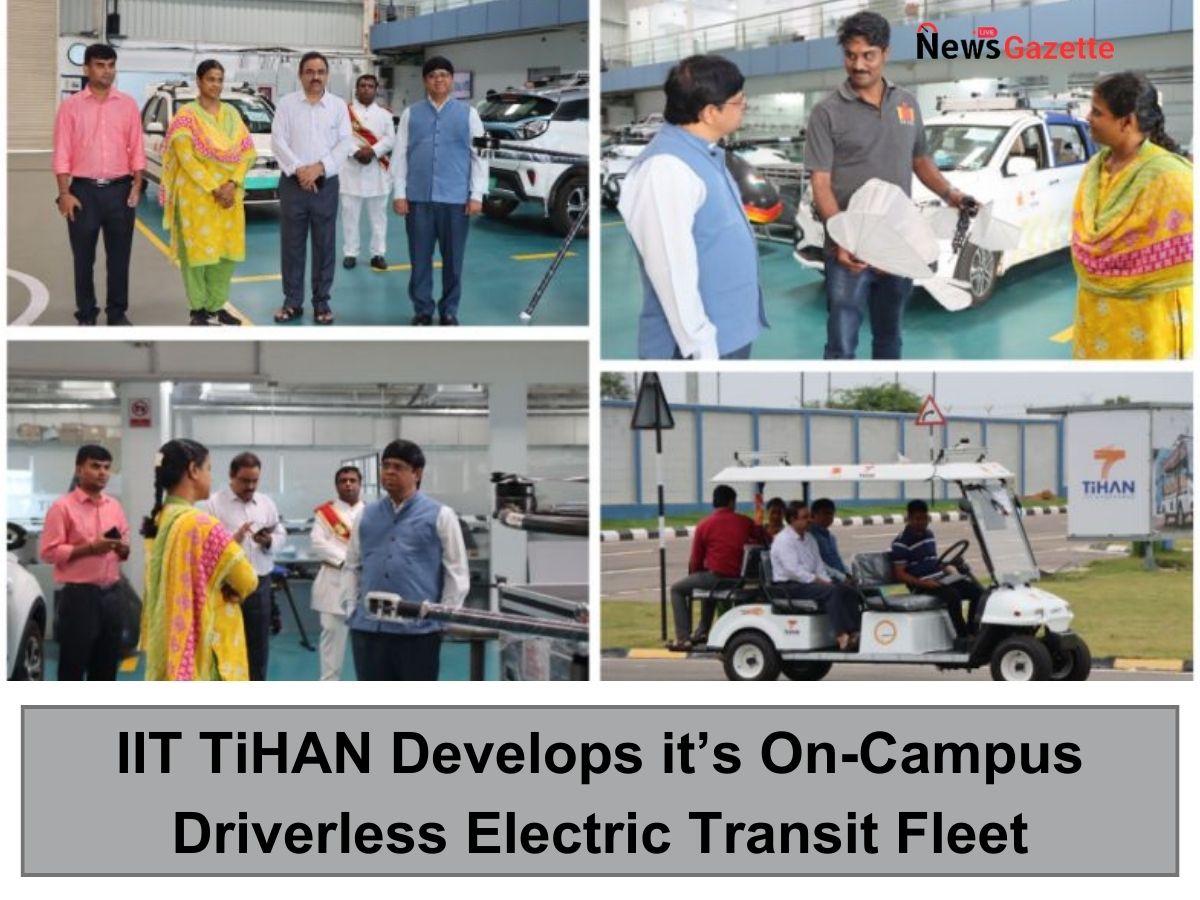
IIT TiHAN Develops it’s On-Campus Driverless Electric Transit Fleet
Catering to India’s ever-growing population, its automotive industry has been a historical indicator of its economic growth. According to the May 2023 Automobile Industry Report published by the India Brand Equity Foundation (IBEF), 7.1% of India’s GDP is attributed to the national automotive industry. With the electrification of the transportation sector trending globally, innovative transformation of the automotive landscape became the norm. India has been an integral part of this sustainable movement with several innovations under its belt.
Tech giants and several key players actively pooled their financial and intellectual resources, aiming towards a cleaner and greener automobile sector. However, it was the Indian Institute of Technology that pleasantly surprised the world with its novel ideas and developmental spirit. With a driverless electric fleet established to facilitate transit on the campus grounds, the sustainable transport ecosystem of Indian Institute of Technology, TiHAN offers a glimpse into India’s future.
The development of the automotive industry is crucial for the nation’s overall development. Fundamentally linked to India’s technological growth, the Indian Institute of Technology, abbreviated as IIT, has historically provided a new generation of engineering and technical geniuses every year. Even before entering the industry, these young IIT students created a wave in the transportation sector. A lineup of driverless shuttle cars supporting on-campus transit of students and professors and plans drawn for two-wheelers as well as aerial models, put India’s automotive industry on the path to becoming a global leader.
Read Also: IIT Roorkee and ICAT Goals Towards a Better Automotive Industry in India
Developed completely from scratch, the driverless four-wheelers are closed models of electric cars. These are India’s first in-line products of the Autonomous Navigation Testbed facility and have been deployed at IIT TiHAN for nearly a year. A similar situation at another IIT, IIT Hyderabad, has been a scene of driverless autonomous cars weaving through the internal roads. Located on the city’s outskirts in a small village called Kandi, the faculty and students of this IIT have been availing the electric vehicle facility for the past two months to facilitate their on-campus transport.
Prof P Rajalakshmi, an electrical engineering department faculty member at IIT TiHAN center, said, “the autonomous campus shuttle uses various sensors and related technology. It was tested and deployed on campus. It has a LiDAR-based navigation system.” When discussing the project’s scope, Rajalakshmi explained that data collected from Hyderabad traffic using special data collection vehicles was critical for the research and development.
Data showed a variation among different prototypes under various testing steps. In the same interview, the professor spoke about the innovations involving aerial and multi-terrain vehicles as groundbreaking solutions for safe and sustainable mobility. She also elaborated on the institute’s goal to collaborate with the Indian government to produce a safety network for highway monitoring. With the country actively devising policies and frameworks for autonomous vehicles, the technology will soon become a part of warehouses, airports, campuses, etc.

Lauren Sargent is a seasoned professional in the field of business, finance media and chemical & materials, boasting more than two decades of experience in the digital arena. She has more than 10 years in B2B journalism. Her primary areas of expertise include business strategy development, operational management, product launches, fostering high-quality journalism, and adeptly leading teams to excellence. In Her role, he assumes responsibility for every facet of content oversight at the News Gazzete.
